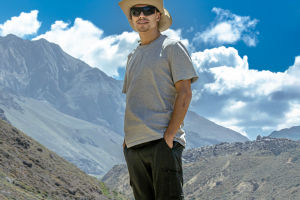Stepping into space isn't just about floating among stars—it's about putting our bodies through challenges we never face on Earth.
Space tests every part of us, from our skeleton and muscles to our very cells, in ways that are both fascinating and risky.
Many of these changes are tied to Einstein's theory of relativity, which shows that time and space behave differently depending on speed and gravity.
Time Dilation: Can Space Make Us Younger?
In theory, astronauts might actually age more slowly than people on Earth. This effect, called time dilation, comes directly from Einstein's relativity. Time isn't fixed—it changes with speed. Astronauts orbit the Earth at around 28,000 kilometers per hour.
While this is far from the speed of light, it is enough to slow down the passage of time measurably. In fact, pilots who have completed long-duration space missions have returned to Earth to find that their onboard clocks lagged behind Earth clocks by a few minutes.
At the cellular level, this slower passage of time can extend cell aging and metabolism. From this perspective, space travel doesn't shorten lifespan; it might even slightly delay aging. However, the effects aren't entirely clear, as prolonged exposure to the space environment also brings serious physical challenges.
Physical Changes: Meet Frank Rubio
Take astronaut Frank Rubio as an example. He spent 371 days on the International Space Station, completing 5,963 orbits and traveling an astonishing 157.4 million miles (253.3 million kilometers). When his spacecraft landed safely on a vast plain, he emerged smiling but physically exhausted. Assisted by the recovery team and medical staff, he had to take careful steps to regain his footing.
Frank's experience mirrors what many astronauts face: extended space travel reshapes the human body in ways we rarely notice on Earth.
Spinal Changes in Microgravity
On Earth, our spine is compressed by gravity, keeping it stable. In microgravity, the spine “unloads,” stretching and allowing astronauts to grow a few centimeters taller. While this may sound like a bonus, it can bring real health risks. Some astronauts experience back pain caused by spinal elongation, and returning to Earth can lead to slipped discs. The low-pressure environment of space also accelerates skeletal loss, leaving astronauts vulnerable to fractures.
On Earth, people lose about 1–2% of skeletal mass each month naturally. In space, six months can lead to a 10% loss. With limited medical support, fractures take longer to heal, making skeletal health a serious concern.
Muscle Atrophy in Zero Gravity
Muscles also suffer without gravity. On Earth, our muscles constantly work to support posture, though we rarely notice. In space, these muscles relax and shrink. Research shows that astronauts can lose up to 20% of muscle mass after just two weeks in orbit. Long missions of three to six months may see losses up to 30%. Returning to Earth after such a period is physically challenging, as the weakened muscles struggle to adjust to gravity.
Radiation and Genetic Effects
Space also causes fluids in the body to shift toward the head, leading to swelling around the eyes and blurred vision. This may result in long-term structural changes in the eyes, sometimes irreversible. Space radiation presents another danger, potentially altering DNA. At the tips of our chromosomes are protective caps called telomeres, which naturally shorten with age.
Surprisingly, astronauts' telomeres may lengthen in space, only to shorten drastically upon returning to Earth. Scientists suspect space radiation is a major factor, adding complexity to the mission's health risks.
Weighing the Risks and Rewards
Clearly, space travel has significant impacts on the human body, most of which are negative. From muscle atrophy and skeletal loss to vision changes and genetic shifts, astronauts face challenges few of us can imagine. Whether space travel shortens or extends life is still up for debate, but there's no doubt that it tests the limits of human health.
Space Lessons
Lykkers, next time we look up at the stars, let's remember that venturing into space is not just an adventure—it's a profound physical challenge. Every orbit, every mile traveled, reshapes the human body in ways we are only beginning to understand. By following astronauts' journeys, we get a glimpse of both the fragility and resilience of our own bodies.
Keep looking up; the universe has lessons for us, and our bodies tell a story as extraordinary as the stars themselves.


